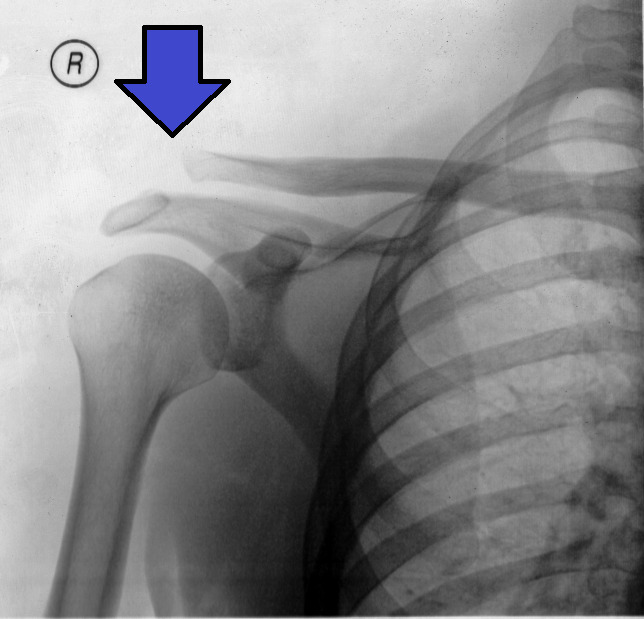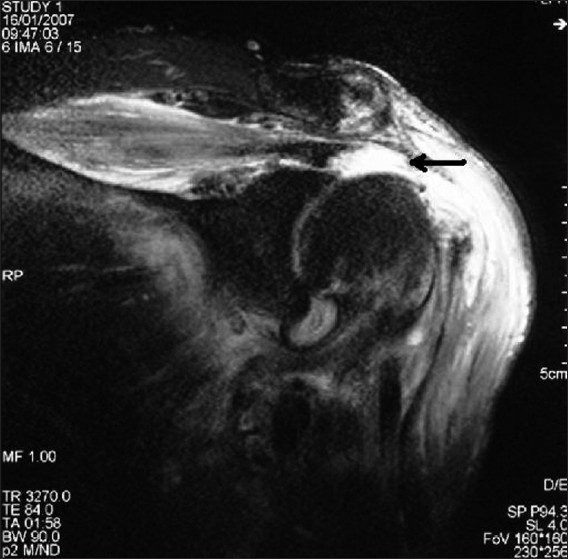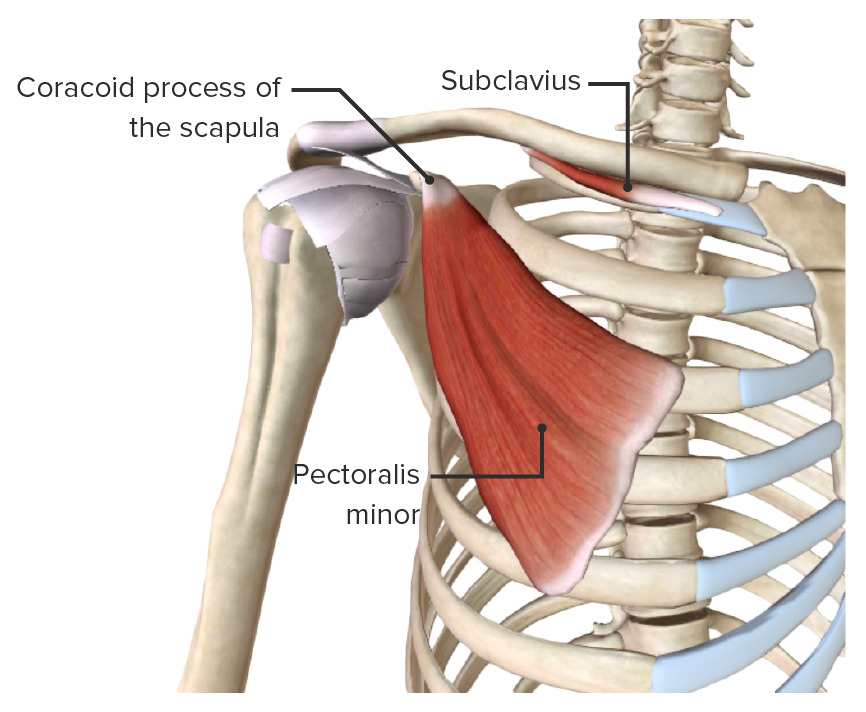Playlist
Show Playlist
Hide Playlist
Rotator Cuff Tear Tests
-
Reference List Physical Examination.pdf
-
Download Lecture Overview
00:00 All right, so having done that, let's move on to some specific etiologies of shoulder pain and we're going to start with the rotator cuff. 00:08 As I mentioned earlier, the rotator cuff is consist of four muscles, the SITS muscles, S-I-T-S and so we'll start with the subscapularis here, the infraspinatus here, the teres minor down here, and then the supraspinatus, so S-I-T-S, the SITS muscles. 00:33 And for the purposes of the physical exam, we take the teres minor and the infraspinatus and we group them together as one because essentially they're performing the same muscular action. 00:42 In fact, shown on this model here, this is the posterior view of the scapula. 00:46 Here is the infraspinatus and the teres minor and you can see that they're largely doing the same thing. 00:51 There are some very subtle physical exam findings that can help to tease them apart, but they're not particularly relevant here. 00:57 And there, our supraspinatus, is there, and our subscapularis is this very large muscle that is anterior to the scapula or deep to the scapula, which is why it's called the subscapularis. 01:08 So let's start off by testing the supraspinatus. 01:11 We're going to test essentially three groups of muscles. 01:14 We're going to start with the supraspinatus. 01:16 And the way I'm going to do that is I'm just going to ask you, Shayla to lift your arm up over your head. 01:21 Good. 01:22 So having done that, I'm going to just have you slowly lower your arm. 01:26 And what I would ask the patient to do is to pay attention to where is it painful as you're lowering your shoulder. 01:33 If the patient has poor, active range of motion, then of course, I would do this myself. 01:39 I would lift her shoulder all the way up and then I would have her slowly lower it as best she could. 01:44 And what I'm looking for something called the 'painful arc'. 01:47 Patients who have specifically disease of the supraspinatus will have the most pain between 120 and 60 degrees. 01:55 And that's because it's actually in that position where the supraspinatus is doing the most work of stabilizing the humeral head in the glenoid fossa. 02:06 When we think about the real mover and shaker of getting your shoulder up in the air, it's not the supraspinatus, it's your deltoid muscle, that big giant muscle that's wrapping around your humeral head. 02:17 It also inserts more distally so it has more torque, more force that it can apply to the shoulder. 02:22 So the supraspinatus is not designed to really move your shoulder around. 02:26 It's to stabilize it in place. 02:28 And when your arm is in this position, there's a lot of work required for that supraspinatus muscle. 02:33 In fact, the entire rotator cuff to hold the humeral head position while the deltoid and you can see she's got some big deltoids here, are trying to pull her arm out of its socket, the supraspinatus, doing the work of keeping it there. 02:45 So that's called the painful arc when a patient feels reasonably well up here, starts to get pain here, the pain continues until you get to around here where things start to relax. 02:55 A patient who has a supraspinatus tear may, in fact, start up here and they start to lower it and then that discomfort kicks in so badly that they drop their arm. 03:04 That's called the 'drop arm sign'. 03:07 The last thing I'll mention about that test, since we're showing it, is that if a patient has the worst pain up here, this is also testing the AC joint. 03:18 So a person with acromioclavicular disease will have pain when the shoulder is all the way up at 180 degrees. 03:24 because as you might imagine, if I lift up this shoulder, I'm pinching this joint once I get up to a certain extreme level of shoulder abduction as well. 03:35 All right, so that was the test for supraspinatus injury, most often tendinopathy. 03:39 But there's actually a really specific test to look for a supraspinatus tear, and it's called the external rotation lag test. 03:46 It turns out the same test is effective for assessing an infraspinatus tear as well. 03:51 So I will demonstrate it now. 03:53 So what I do is I take the patient's arm. 03:55 We're going to externally rotate to the kind of hard stop, or I can feel that this is kind of the extreme of her range of motion. 04:01 And then I'm going to have you do Shayla is I'm going to let go of your wrist, but I want you to actively keep your arm in this position after I let go. 04:08 And you note that I'm holding her elbow in one position. 04:11 I don't want her to cheat and bring her arm forward. 04:13 I wanted to keep her elbow here. 04:15 And I want you to keep your wrist in this position after I let go. 04:17 You ready? 3, 2, 1... 04:20 So she was able to easily do that. 04:22 But in this position, she's activating the stabilizing force of her supraspinatus and her infraspinatus. 04:28 If one of those muscles was torn, she would lag inwards like that. 04:33 And that's why it's called the external rotation lag test. 04:36 Very useful test. 04:39 So those are the tests for the supraspinatus and it moves us into the infraspinatus. 04:43 I already showed you the test for a tear of infraspinatus and I'm going to show you a test for just tendinopathy of the infraspinatus. 04:49 The infraspinatus again and the teres minor, the two of them combined are responsible for externally rotating. 04:55 You can sort of see here that if these two muscles were to contract, they would rotate my humeral head outward like this. 05:03 So in order to test that, I'm going to basically resist her efforts at externally rotating. 05:08 So I just want to keep your elbow tucked in and just rotate out and I'm going to resist you So just that test, if she has significant weakness on one side versus the other or if this action reproduces the pain that she's been reporting, that test of resisted external rotation would support an infraspinatus tendinopathy, a disease of the infraspinatus. 05:30 All right, time to move on to the subscapularis. 05:33 This is the anterior muscle on the humeral head. 05:36 This big meaty muscle here that lines the inside of the scapula. 05:41 When this muscle contracts, you're going to move, your humeral head is going to rotate in. 05:45 So this is your primary muscle for internal rotation. 05:50 And first thing I'm going to do is show you the test for a tear of the subscapularis since that muscle's responsible for internal rotation. 05:58 If I take her arm to the extreme of internal rotation, to where I sort of feel, again, a hard end point, she can't internally rotate any more than this. 06:06 I'm now going to ask you to hold your wrist here when I let go, just like we did in the other direction before. 06:11 So I'm going to sort of hold her elbow in position while I do this. 06:15 On the count of three, I let go of your wrist 3,2,1... and she's able to do that. 06:20 There was a tiny little bit of lag there, but not enough that I'd be concerned. 06:24 And in contrast, if a person did not have a strong subscapularis, or if it was torn, that wrist would lag inwards. 06:31 And that would be a confirmation that the person has or likely is to have a subscapularis tear. 06:39 And then we're going to do a test for subscapularis tendinopathy. 06:43 To be clear, there's tendinopathy, which is a strained, unhappy tendon, and then there's a torn tendon. 06:50 And we're always trying to distinguish between those two because a torn tendon can be repaired. 06:55 A tendon that is just strained or has a little bit of some micro tears in it, just need some physical therapy and a little bit of time. 07:02 So there's a big difference in how we'd manage those two things. 07:05 So we look for a tear already for tendinopathy of the subscapularis tendon. 07:09 We're going to do what's called the 'belly-off test'. 07:11 Put your hand on your belly, please Shayla. 07:13 I'm just going to keep your hand there for the moment. 07:16 I'm going to bring your elbow kind of awkwardly forward. 07:18 It always feels weird to do this test. 07:21 And then I'm going to let go of your hand and I want you to keep your hand on your belly after I release it 3,2,1.. 07:29 Perfect. 07:30 So the fact that she can keep her hand on her belly tells me that her subscapularis again, this muscle is strong enough to keep her humerus fully internally rotated. 07:42 And one last test to go over to assess the rotator cuff very quickly, is something called the 'lateral Jobe test' and the utility of this test is that it essentially tests the entire rotator cuff. 07:54 And if it's normal, it makes your likelihood of a rotator cuff tear much less. 07:59 So, I'll demonstrate that really quickly. 08:00 Just bring your arm out to the side like this and just resist me as I push down. 08:05 If that doesn't cause the patient have significant pain or if there's no asymmetric weakness on one side versus the other, your likelihood of a rotator cuff tear is certainly less.
About the Lecture
The lecture Rotator Cuff Tear Tests by Stephen Holt, MD, MS is from the course Examination of the Upper Extremities.
Included Quiz Questions
What are the four muscles of the rotator cuff?
- Supraspinatus, infraspinatus, subscapularis, and teres minor
- Supraspinatus, infraspinatus, deltoid, and pectoralis
- Deltoid, infraspinatus, subscapularis, and teres minor
- Infraspinatus, subscapularis, deltoid, and teres major
- Subscapularis, deltoid, teres major, and teres minor
What muscle is tested with a "painful arc" from 120 to 60 degrees?
- Supraspinatus
- Subscapularis
- Teres minor
- Deltoid
- Trapezius
Tendinopathy of which muscle causes pain on resisted external rotation?
- Infraspinatus
- Teres major
- Subscapularis
- Deltoid
Which muscle located on the anterior scapula is responsible for internal rotation?
- Subscapularis
- Supraspinatus
- Teres major
- Infraspinatus
- Teres minor
Customer reviews
2,5 of 5 stars
| 5 Stars |
|
0 |
| 4 Stars |
|
1 |
| 3 Stars |
|
0 |
| 2 Stars |
|
0 |
| 1 Star |
|
1 |
2 customer reviews without text
2 user review without text






